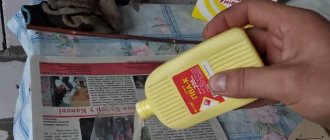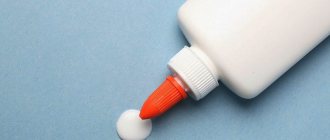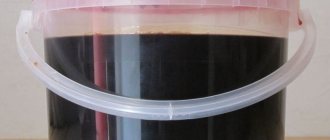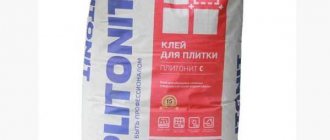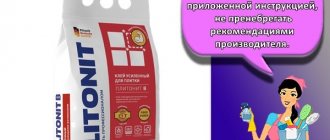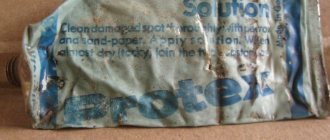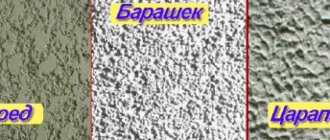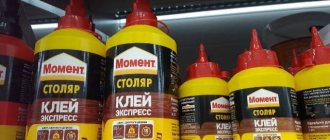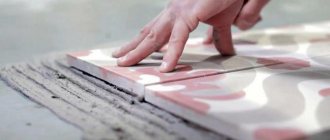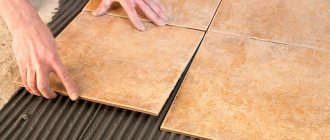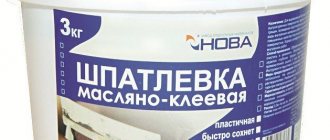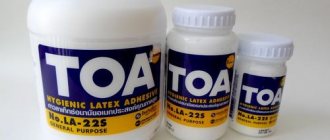Types of PVA glue
PVA construction adhesive is available in a large number of modifications. They differ from each other in technical characteristics, areas of application, and other factors.
You can find such varieties in practice.
- Household or wallpaper.
Provides high-quality adhesion to substrates such as plaster and drywall, brick, concrete. Can be used even when gluing heavy canvases, textiles, foam rubber, and paper. Sold in the form of large buckets or jars, it is often used in practice.
- Building. Typically presented as a waterproof PVA emulsion.
Includes polymerizing particles. The main purpose is to compact various building mixtures, but this glue can be used to work with materials of increased strength and weight.
3.PVA-MB is a universal type of composition.
Helps to connect any products - glass and wood, leather and cardboard. The technical characteristics are suitable for processing serpyanka, linoleum, carpet and so on.
- Clerical.
It is actively used in everyday life, including when you need to create children's crafts. Available in dry or liquid form.
- PVA M. Also called Super.
An adhesive composition with additional components that significantly increase strength after drying. Recommended for use for various household tasks. Makes it easier to create thin seams, gluing up loose elements or restoring small damaged areas. And this is not all possible applications.
Tips for working with construction adhesive
For use as a plasticizer for masonry mortar, a mixture of 2 parts PVA and 1 part liquid is a universal additive. PVA construction adhesives are universal; the mixture can be applied undiluted for maximum sealing or adhesion.
PVA can be simply applied to any surface, but since it is water-based and requires absorption, the solution will not bond two non-absorbent surfaces (glass, plastic, metal).
Construction adhesive is used to adhere ceramic tiles to wood (panels for baths and kitchens). A minimum of 3 coats of undiluted PVA is required, each coat must dry thoroughly before applying the next. To fill the main screed indoors, the glue content can be increased to 18% of the binder.
Parquet, linoleum on a felt or fabric basis, polyvinyl chloride tiles can be glued to wooden floors by applying the mixture with a spatula. Material consumption is 0.55-0.85 kg per 1 m².
Explanation and technical specifications
The abbreviation PVA stands for polyvinyl acetate. It was this component that served as the basis when the designation was reduced to three letters. This substance occupies up to 95% of the entire volume. Manufacturers also describe what the material consists of additionally.
State standards say that the technical characteristics of materials should be as follows:
- Creation of elastic seams, which is always relevant.
- Maintain uniform colors.
- No pronounced specific odors.
- Ability to withstand loads up to 550 N/m.
- Average drying time up to 24 hours. It doesn't matter what will be used.
- Protection from moisture and temperature changes.
Indices D1… D4 indicate moisture resistance. The composition of PVA glue also remains virtually unchanged.
Properties [edit | edit code ]
- The gluing mechanism is based on wetting and partial impregnation of surfaces with a solvent (water). PVA glue adheres extremely poorly to surfaces that are not wetted or saturated with water [ unspecified source 676 days
]. - High frost resistance of the adhesive joint, low frost resistance of the PVA dispersion itself (does not allow freezing) [ source not specified 676 days
].
- Good adhesive ability (according to GOST (GOST 18992-80) the adhesive ability should be at least 400 N/m for the first grades, 550 N/m for the highest grades).
- Non-toxic, fire and explosion proof.
- Diluted with water. After polymerization, it swells, but does not dissolve (does not wash off). The polymerized part is soluble in acetic acid and many organic solvents: acetone, methanol, ethyl acetate, benzene, dichloromethane, etc.
- A thin layer of PVA glue on paper is almost invisible, which is convenient when gluing paper models and crafts. In particular, using PVA glue you can work in piecewise papier-mâché technique.
- When hardened, it glazes with little shrinkage, but does not become overly brittle, which allows filling gaps up to several millimeters.
- When the expiration date expires, it separates into two fractions (a clear liquid on top - “water”, a thick white creamy mass of polyvinyl acetate at the bottom). After extremely thorough shaking, reuse is possible. However, glue with an expired shelf life cannot remain in the form of a colloidal solution for a long time and quickly separates back into fractions [ source not specified 676 days
].
What is PVA glue made of?
The main composition is polyvinyl acetate and plasticizers along with other additives. The exact formula varies depending on the specific variety in question. Here are just some of the components that you may encounter in practice.
- Preservatives of various types.
- Dibutyl phthalate.
- Stabilizers.
- Triquerzyl phosphate.
- Complex varieties of esters.
- Water component.
- Acetone.
- Dioctyl sebacate.
Production technology
OGRN – 1047796379080
Anyone can make a composition if they go through the following steps:
- Preparation of raw materials.
- Adding specific components.
- Selecting the required proportions, then determining the weight.
- All ingredients are processed.
- They cook.
- They insist.
- Distribute technical and other glues into portions and place them in packaging.
The types of equipment used include packaging materials, dissolvers, mortar mixers, and so on. They can only manually place raw materials into certain tanks.
The kneading procedure can be complicated due to the high viscosity of the composition. But only beginning manufacturers encounter problems; over time, they get rid of any troubles. PVA glue decoding also helps to understand how to proceed.
GOST PVA glue
Each buyer can and even should familiarize themselves with the state standards that apply to these products. Then there will be more confidence that the money is not wasted. And that the composition is capable of performing its function.
According to GOST, the specified universal PVA glue has the number 18992-80 or 18992-97.
PVA glue properties after drying
The dry state of the glue is one of the main characteristics of this substance. From this, among other things, you can determine the overall quality. Optimally, when all properties are preserved in full, a transparent film of increased viscosity appears on the surface. Such elements are easy to notice during any inspection; due to this film, the materials are held together. This is an important characteristic.
But it is impossible to give a definite answer to the question of how long it takes PVA to dry. On average, this process takes about a day.
Manufacturers also provide information on this issue in the instructions. Often everything depends not only on the initial properties of the material, but also on the total number of layers, the temperature of the room and hair dryer, the area of smearing, and the area of application. Whether the material is waterproof or not doesn't matter.
Container and packaging
On counters, PVA glue is found in the following containers that can be used equally:
- Tubes.
- Banks.
- Buckets.
These are usually plastic-based devices. The tubes have special spouts. In the case of buckets or cans, you will need to buy an additional tool to make it easier to distribute the mixtures over the surface. They can consist of different materials.
PVA glue - characteristics, composition, what glues and how to dilute it
Easy to use PVA glue is a universal mass, popular in everyday life and in the professional sphere. This product performs many functions and is actively used in construction, handicrafts, and repairs. The polyvinyl acetate composition is capable of connecting almost any surface and improving the quality of different mixtures. It is for these reasons that such glue is known not only to kindergarteners and schoolchildren, but also to adults who use its abilities to the maximum.
Is it worth using expired composition?
This question comes up among buyers quite often. The shelf life is already long, but people often miss the specified time. And some try to apply the material even after this. Is it possible to glue materials like this or not?
It is difficult to give a definite answer to this question. Much depends on when the shelf life expires and for what purpose they plan to use the composition. For example, if the time ran out literally a month or two ago, then it is quite possible to apply a primer or apply a composition for paper or cardboard.
If 3 months or more have passed, all properties are lost. Even the simplest materials will not stick together. There is a high chance of lumps or a jelly-like consistency. The use of the compositions becomes completely inconvenient. Any description will confirm this.
Manufactured in Russia, famous brands
Only at first glance it may seem that in the Russian Federation many companies are engaged in the production of this material. But the assortment on the market is quite enough to satisfy most customer needs.
An example of popular brands is Moment and Expopribor. Each composition has its own distinctive features and characteristics. PVA glue can be used to perform different types of work.
PVA glue Expopribor
Glue roller, one of the popular varieties. Represents premium class.
Properties allow you to work with any materials:
- Ceramics.
- Leather.
- Textile.
- Tree.
- Cardboard.
- Paper.
A convenient tool for creating the most neat seams, it is easy to use and has low consumption. Does not pose any danger to human health. The composition does not include toxins, and it will look good.
Sales form: standard packaging, supplemented with roll-on applicators. Due to them, the distribution over the surface is always uniform. To protect against material leakage, a spring-loaded stainless steel ball is used. The construction universal composition has in part similar characteristics.
Glue moment PVA
Available in different versions, each of which has its own properties:
- For working with wood and leather.
- With additional moisture protection.
- Which is needed to connect paper and cardboard.
It is clear from the name that the material was originally created for instantly bonding different surfaces to each other. But don't take such messages too literally. At least a minimum amount of time is needed to create reliable adhesion between the products. The purpose in this case does not matter.
Consumers often add PVA glue to construction mixtures. In practice, experiments sometimes fail, but more often the results are positive. For packaging, choose containers, buckets, and small tubes. If necessary, everyone will find a suitable and necessary option for themselves.
Reviews of some formulations
Reviews of PVA glue appear on the Internet quite often, because it refers to materials that are used in practice quite often. Take the same compositions Moment and Expopribor.
Among the positive aspects, users describe:
- No explosion hazard.
- You can use the compositions to add to building mixtures, or this is an independent option.
- No pungent odors.
- Wide selection of packaging containers.
- Cost savings.
- Resistance to any influences, including ultraviolet and thermal, mechanical and water.
- Efficiency.
Among the shortcomings, the short shelf life attracts the most attention. There are no other noticeable disadvantages. The abbreviation has long been familiar to many.
PVA rating
It is worth considering products that are often encountered in practice, which are purchased to solve various problems.
- OfficeSpace. A universal variety of compositions. The product is completely protected from moisture and exposure to negative temperatures. The form of sale is small jars that do not have dispensers. It is better to additionally purchase a brush to distribute the compositions on the surface. It can be called differently.
- White Glue. Expodevice. Compact bottles with an elongated spout. This product does not emit any unpleasant odors at all. It can bond different surfaces, but it is better to combine PVA glue with other mixtures that are considered more effective.
- Super PVA D Composition, which has long been known for its strength and reliability, is best combined with materials such as chipboard, wood, veneer and so on. The composition does not contain toluene or various solvents.
- Super PVA D The same reliable material that guarantees reliable adhesion. Excellent made composition to organize any construction work.
- Beam PVA-M. Packaged in standard bottles equipped with dispensers.
- Slide-Stick. You can often see this development in very small bottles. An excellent option if you need to carry out minor work with wallpaper, cardboard, or paper. An effective, frost-resistant product that can last as long as possible after use.
- PVA Moment Joiner. A universal glue that helps connect trees of different species. Quick drying allows this substance to be included in many ratings. Reliably connects parts, but after work does not leave any marks. The compositions used are quickly removed.
PVA rating
Separately, it is worth considering several products that are often purchased and used for different purposes. These include:
- Universal PVA Moment Joiner. An excellent option for working with wood of any species. PVA glue was included in the rating due to its quick drying, reliable connection of parts and the absence of marks on surfaces after work.
- Expo device Slide-Stick. The product is more often found in small bottles. It is usually used for small jobs with paper, cardboard, and wallpaper. The composition is characterized by frost resistance and efficiency.
- Beam PVA-M. The product for gluing various surfaces is packaged in standard bottles with dispensers. You can use it at home, in the office or on the street, since this mixture is not afraid of temperature changes.
- Super PVA D2 moment. A universal option with increased adhesion strength and reliability. The composition is ideal for construction work.
- Moment Super PVA D3. Moisture-resistant adhesive for wood, veneer, chipboard and other similar materials is characterized by strength and reliability, like the previous product. The most important thing is that it contains no solvents or toluene.
- Expo device White Glue. Glue without a specific odor is usually sold in compact bottles with an elongated spout. It holds different surfaces together, but during repair work it is better to combine it with more effective mixtures.
- OfficeSpace PVA glue Universal. The product is resistant to frost and moisture. It is often sold in small jars without dispensers, so for use you will need to additionally purchase a brush.
PVA glue, which is better?
Buyers often wonder how to choose from the variety available. Experienced specialists in these cases point to PVA-Universal. This choice is explained by the possibility of using the composition both in handicrafts and in construction.
Instructions for working with glue
Each composition in construction is supplied with the most simple and understandable instructions for use. It is worth carefully studying the inserts that are placed inside along with the composition. There, manufacturers specifically report on the use of this adhesive mass. If supporting documents are missing, it is recommended to follow these standard rules:
- Before applying the adhesive, the surfaces requiring treatment are completely cleaned of any contaminants and dried.
- The mass is distributed with appropriate brushes. For the same purposes, you can take spatulas with teeth.
- The composition is applied evenly. The main thing is that the layer is not too thin.
- If a second layer is required, it is applied only after the first has dried.
- It is recommended to press the parts tightly against each other and hold them in this position until they dry.
Storage temperature for working with PVA and operation
There are additional storage and use rules that deserve attention. During operation, it is important not to allow the temperature to drop below -20 degrees Celsius. The maximum value is considered to be plus one hundred degrees. With such an impact, the destruction of the mass begins. When storing PVA glue, approximately the same rules apply.
The compositions are used equally outdoors and indoors. It is allowed to carry out operations during light rainfall, since protection from moisture is also present. There is no need to be afraid of a serious deterioration in the quality of the result.
How long does it take to dry?
This information also matters to consumers. The numbers may differ depending on the purpose for which a particular composition is used. Each case has its own instructions. For example, in the case of paper, the total drying time will be up to 15 minutes. Those interested in construction and repair work must wait 1 day.
A thin layer of adhesive will dry much faster. Therefore, it is recommended to choose a uniform distribution over the surface, with which various tools help. Microwaves or hair dryers speed up the drying process by briefly raising the temperature.
How to dilute PVA glue
Many people ask whether it is permissible to use water. This component could solve the problem of thickened compounds. This can be done, but only in some situations. The main thing is to add liquid carefully, literally in grams.
When using household and office type glue, you don’t have to worry about deterioration in performance. Other types of PVA work better with acetone.
How to thicken PVA glue?
The mass thickens on its own if you leave it in an open container for 24 hours. During the specified time, excess moisture has completely evaporated, and work can begin.
Directions for use [ edit | edit code]
Before use, the glue should be mixed thoroughly; then apply a thin layer with a brush to one of the surfaces to be glued, connect to the other and press firmly. It is recommended to work with glue at an air temperature of no lower than +6 °C and a relative humidity of no more than 80% [ source not specified 676 days
] .
PVA glue is a popular product on the market. This is a multi-purpose, non-toxic, water-based paste designed for household and industrial applications. Designed for gluing various surfaces, including paper, wood, felt, glitter.
How to make PVA glue at home?
It is important to carefully select the ingredients, including:
- Gelatin 5 grams.
- Ethyl alcohol 20 ml.
- Wheat flour 100 grams.
- Distilled water 1 liter.
- Glycerin 4 grams.
The cooking process itself is described as follows:
- Gelatin is soaked in plain water and left for a day. It is important to follow the official instructions completely.
- Combine all the components in a separate container, without adding only alcohol and glycerin. Then the mixture is sent to a water bath until everything completely turns into a thick mass with a homogeneous structure. Do not forget about periodic stirring.
- Add the remaining ingredients and stir them.
- Wait until the mixture cools down. They start using it immediately, or take a container for storage, which is completely covered with a lid.
For coloring adhesives, you can choose markers or felt-tip pens, pencil leads, brilliant green, iodine, nail polish, gouache or watercolor paints.
The number of components is chosen individually, depending on how rich the color you want to get. After combining the PVA and the coloring component, the mass is thoroughly mixed using ordinary toothpicks or spatulas. This is a standard solution for small volumes.
Preparation of a composition for whitewashing trees using PVA
PVA is used to prepare whitewash for trees. The adhesive increases moisture resistance and is also an inexpensive base option for garden whitewash. To prepare the garden mixture you will need:
- Slaked lime - 1 kg.
- Clay - 500 g.
- Milk - 150 ml.
- Glue - 1 small bottle.
Clay, lime and milk are mixed in a bucket. The clay is pre-soaked in warm water to dissolve the lumps. PVA is added before applying whitewash to the trunk of the tree being treated.
What to replace it with?
Among the foreign compositions, we can note such as Pattex colle vinilica universal flex, Cleopatre Cleocol, Lydiakol.
On the territory of the Russian Federation, PVA can be replaced with a composition of a different type, which is intended for specific purposes. For example, in the case of wallpaper, they are looking for an option that is designed specifically for such compositions.
In the case of simple and easy one-time jobs, homemade paste is often sufficient. Its base is water or starch. Guaranteed cost reduction.
Imported analogues
Products with similar properties and functions are also produced abroad. At the same time, their overall quality is in no way inferior to Russian developments.
Korean pva glue leeho
Produced in South Korea, available in 28 ml with two dispensers. The connecting properties of this composition are quite good; it always fits well onto the surface being treated. At the same time, you don’t have to worry about the formation of foam or lumps. Drying takes minimal time.
What is glue made from?
Understanding production technology is not difficult if you have the necessary equipment. A completely different question is the chemical composition of PVA glue.
The following components are used for manufacturing:
At first, this list is surprising, but it’s enough to remember what was taught in chemistry lessons, and everything will become quite logical. When purchasing materials separately, their cost does not seem high, but when all these components are combined, the amount comes out to be considerable. Fortunately, sales of glue bring in many times more profit and all expenses are easily covered.
Comparison of PVA and bustylate
Novice craftsmen are accustomed to considering these materials to be almost identical, but this approach is wrong. PVA is just glue, in its pure form. Bustilate assumes the presence of various impurities in the composition. Due to additional components, the adhesion of the composition increases and the shelf life increases several times.
Moreover, both compositions really have the same characteristics when it comes to protection from frost and heat, and exposure to moisture. The rules for application to surfaces and removal remain approximately the same.
Advantages and disadvantages of PVA
Polyvinyl acetate glue is a common white glue that most people are familiar with. It is used for many crafts, and PVA has several advantages over older types of glues. However, it is not suitable for all activities and has some disadvantages.
Before PVA glues became commercially available in 1960, the most common glue was so-called "rabbit glue." It was produced in pellet form and had to be heated before being applied to the part. PVA can be used straight from the bottle it comes in. New developments related to PVA glue have put “rabbit glue!” to the background. Note that PVA can be used not only on paper, but also for compacting concrete.
PVA is water-based so it can be applied directly from the bottle and does not require preheating like older glues. If you simply bend the bottle of glue, the contents will not come out immediately; you need to press on the packaging in order to remove the glue from it. This packaging makes the glue easy to use. PVA is water soluble, which means it can be cleaned by simply soaking a towel in water. If the glue dries, it is not so noticeable on the surface.
Disadvantages of PVA Some of the disadvantages of PVA glue are related to its advantages. Due to the fact that PVA is water based, anything held together by this product may begin to fall apart if exposed to water. For the same reason, parts connected with PVA glue must stand under weight for some time until they dry out. Additionally, the glue may drip or leak before it dries, meaning there may be traces of glue left on visible parts of the parts. It is important not to store PVA in the cold, because cold destroys the basic properties of this product.
What kind of work is PVA not suitable for?
PVA glue cannot glue parts made of any materials. It is corrosive to metal objects. PVA is only effective on materials that have a porous surface. In addition, for greater effect, it is applied at room temperature. Due to the fact that temperatures below zero spoil such glue, PVA cannot be used for parts that will remain outside. PVA glue is not intended for filling cracks, but can be effective for such purposes if mixed with sawdust.
Source
Types and characteristics of PVA
Not only the scope of application, but also the actual technical characteristics depend on the specific type of composition.
Household PVA glue
Experts recommend giving it preference when it comes to fabric, photo wallpaper, fiberglass, non-woven base. The degree of adhesion will be high enough for surfaces such as brick and plaster, plasterboard or concrete.
It is possible to carry out decoupage, combining paper and textiles, foam rubber. The consistency is moderately thick. Frost-resistant glue that can withstand up to -40 degrees. After defrosting, the composition completely retains its properties. Lumps may only appear after the original expiration date. Available in cans or buckets.
From popular brands:
- White House.
- "Profilux".
- Attomex.
- Big.
Stationery PVA glue
This variety is very similar to what was mentioned above. Often used for creativity and crafts. The liquid form is common in bottles and small jars. There are also special adhesive pencils.
The most famous brands include Centrum and Lenta, Luch, 365 days, Attache, Office Space, Dolce Gusto and so on.
Universal PVA glue
Here there is the MB marking, which distinguishes such compositions from analogues. Helps to connect various materials with each other, including glass and leather, wood, cardboard, carpet, serpyanka, linoleum. An excellent addition to building mixtures with a water-dispersion base. The composition can withstand temperatures down to -20 degrees.
There is a modification on sale with the designation PVA-M. Low prices become the main difference from analogues, but in this case you can’t count on high quality.
Universal products are produced under the names Brauberg, PVA-801, Omega, Navigator, Schreiber, Komus, Tex Universal, Lakra Extra.
PVA superglue
It is produced with special additives, thanks to which the most durable seams are obtained. Suitable for various types of renovations, even inside the kitchen and bathroom. Does an excellent job of restoring damaged areas.
Buyers have long known such brands as White House, Moment Stolyar Super-PVA, Novokhim, Akron, VGT.
PVA construction adhesive
This is a common type of glue that cannot resist active moisture. Not suitable for rooms where such indicators are quite high. Builders recommend using the composition as an emulsion with polymerizing particles.
The composition helps to increase adhesion with different substrates. PVA dispersions of this type are often added to paints and primers, and various building mixtures.
Such products are produced with a separate marking in the shape of the letter D, which indicates moisture resistance. Typically, numbers from 1 to 4 are used. Adhesives are suitable even for outdoor work; they cope with temperatures down to -40 degrees. Consumption per 1 square meter remains small. Drying is quick and there is virtually no shrinkage.
There are products under the brands “Moment”, “Tex”, “Lakra Lux”, “Contact”, “Titan”.
The most common types [ edit | edit code]
- Household PVA glue (wallpaper)
is used for gluing paper products, for gluing paper and washable paper-based wallpaper on plastered, wooden and concrete surfaces. In appearance it is a homogeneous, lump-free mass of white or cream color. The frost resistance of household PVA glue is 6 freeze-thaw cycles at −40 °C. - PVA stationery glue (PVA-K)
is used for gluing paper, photographic paper, and cardboard. In appearance it is a viscous liquid of white or slightly yellowish color, without lumps or mechanical inclusions; surface film is allowed. The glue is not waterproof and frost-resistant. - PVA universal glue (PVA-MB)
is used for gluing products made of wood, paper, cardboard, leather, for gluing paper, fabric on wooden, glass, metal surfaces, as a component of the formulations of putties, primers, and water-based concrete mixtures. In appearance it is a viscous mass of white or slightly yellowish color, without lumps or foreign inclusions. Frost resistance is 6 freeze-thaw cycles at −20 °C. - PVA-M glue
is a cheaper version of PVA glue; it has a snow-white tint, in contrast to the creamy color characteristic of PVA.
The consistency is slightly uneven - under the top thin transparent layer of “water” there is a snow-white mass. Used for gluing wood, paper, cardboard. Manufacturers do not recommend using it for gluing glass, porcelain, leather, etc. [ source not specified 676 days
] - Coarse polyvinyl acetate homopolymer dispersion (PVA dispersion)
is an aqueous solution of a polymer stabilized by a protective colloid, usually another high-molecular compound (for example, polyvinyl alcohol), and is characterized by high adhesive ability. Basis for preparing PVA glue. There are two types: unplasticized (D51S, D51V) and plasticized (DE51/10S, DF51/15V). EDOS or Dibutyl phthalate (DBP) is used as a plasticizer. In appearance, the PVA dispersion is a viscous liquid of white or slightly yellowish color (the yellowness is mainly imparted by the plasticizer), without lumps or foreign mechanical inclusions; surface film is allowed. Fireproof. Toxic properties class 3 (moderately hazardous substance). The frost resistance of the unplasticized dispersion is 4 freeze-thaw cycles. PVA dispersion is widely used:
- in construction, as an additive to mortars;
- in the glass, textile, printing, footwear and leather industries;
- in the production of water-dispersed artistic (Tempera PVA) and construction paints, cigarettes, packaging, techno-fabrics, household chemicals;
- when gluing wood, paper and cardboard.
Adding PVA to mortars increases the adhesion of mortars to bases, etc., imparts plasticity, and increases the strength of the final product.
Factors affecting drying time
Often buyers are interested in increasing the drying time of PVA. It can reach 24 hours if the room temperature is low enough. If the area is large or the seam is too thick, it also takes more time.
The following tips can help you get the results you want faster:
- High-quality surface preparation, including not only removing dust and dirt, but also degreasing.
- Use a roller rather than a brush. Then the layers become thinner.
- Maintaining tight compression of surfaces with each other.
- Moderate increase in temperature, including with construction or household hair dryers.
